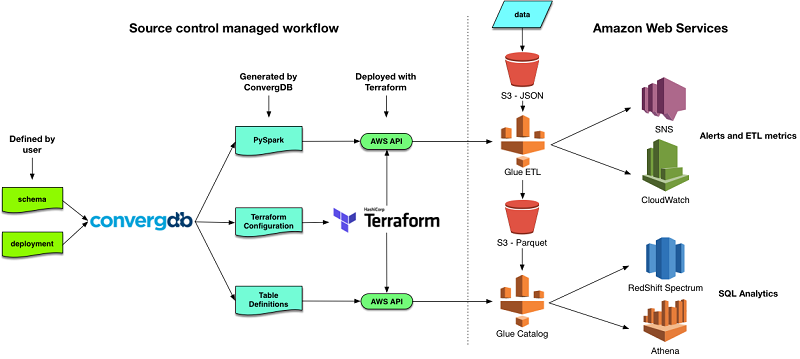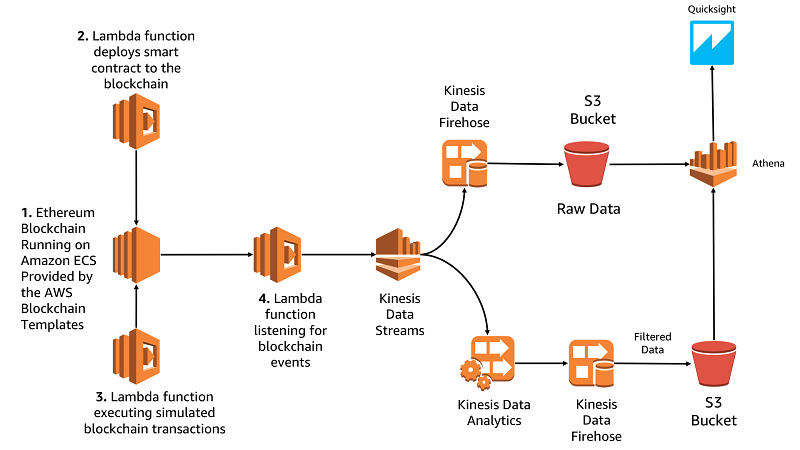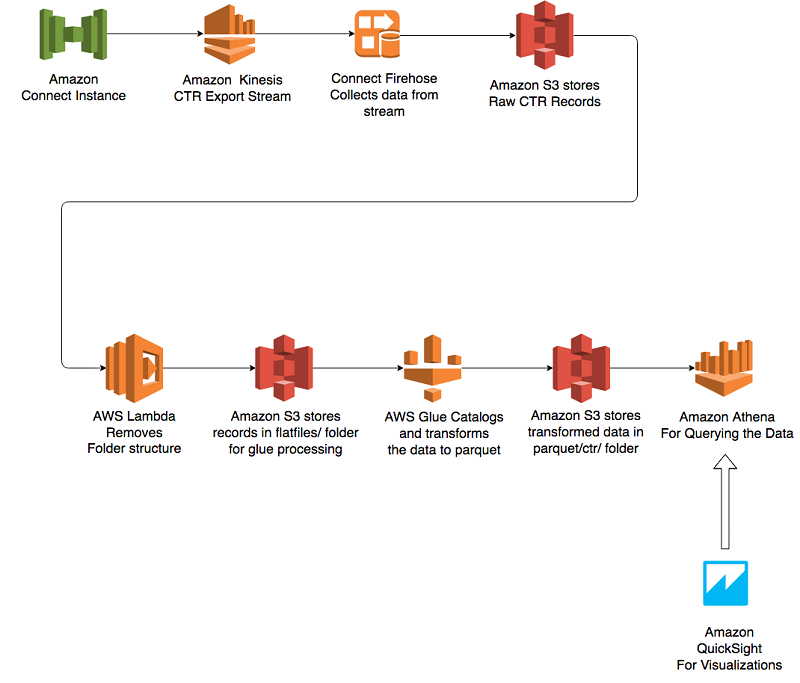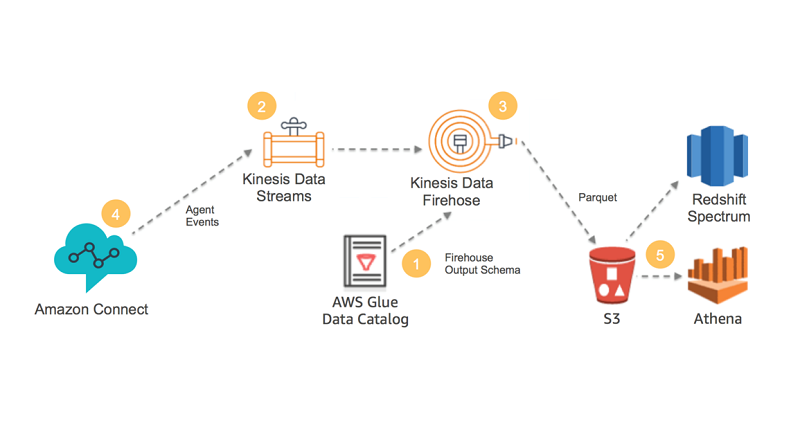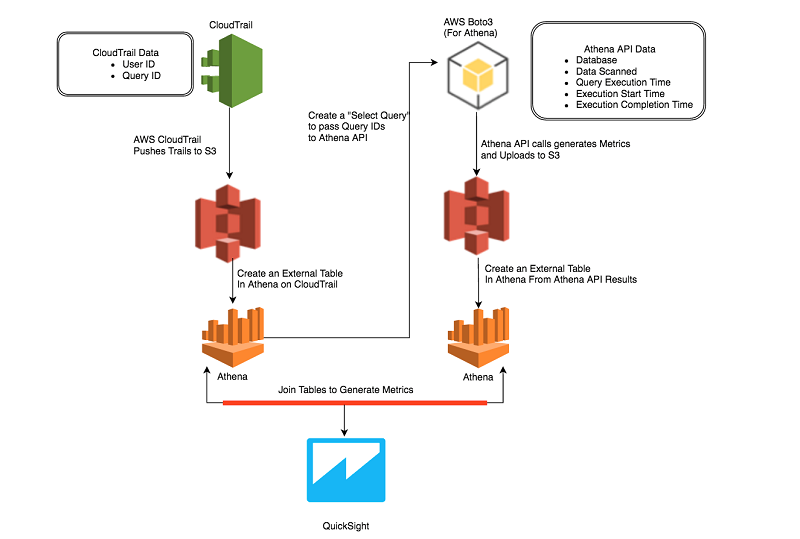AWS Big Data Blog
Category: Amazon Athena
How Pagely implemented a serverless data lake in AWS to facilitate customer support analytics
In this post, we discuss how Pagely worked with Beyondsoft, an AWS Advanced Consulting Partner, to use ConvergDB, an open-source tool developed by Beyondsoft, to build a DevOps-centric data pipeline. This pipeline uses AWS Glue to transform application logs into optimized tables that can be queried quickly and cost effectively using Amazon Athena.
How Goodreads offloads Amazon DynamoDB tables to Amazon S3 and queries them using Amazon Athena
In this post, we show you how to export data from a DynamoDB table, convert it into a more efficient format with AWS Glue, and query the data with Athena. This approach gives you a way to pull insights from your data stored in DynamoDB.
Orchestrate multiple ETL jobs using AWS Step Functions and AWS Lambda
In this post, I show you how to use AWS Step Functions and AWS Lambda for orchestrating multiple ETL jobs involving a diverse set of technologies in an arbitrarily-complex ETL workflow.
Build a blockchain analytic solution with AWS Lambda, Amazon Kinesis, and Amazon Athena
In this post, we’ll show you how to deploy an Ethereum blockchain using the AWS Blockchain Templates, deploy a smart contract, and build a serverless analytics pipeline for that contract based around AWS Lambda, Amazon Kinesis, and Amazon Athena.
Analyze Amazon Connect records with Amazon Athena, AWS Glue, and Amazon QuickSight
In this blog post, we focus on how to get analytics out of the rich set of data published by Amazon Connect. We make use of an Amazon Connect data stream and create an end-to-end workflow to offer an analytical solution that can be customized based on need.
Analyze Apache Parquet optimized data using Amazon Kinesis Data Firehose, Amazon Athena, and Amazon Redshift
Kinesis Data Firehose can now save data to Amazon S3 in Apache Parquet or Apache ORC format. These are optimized columnar formats that are highly recommended for best performance and cost-savings when querying data in S3. This feature directly benefits you if you use Amazon Athena, Amazon Redshift, AWS Glue, Amazon EMR, or any other big data tools that are available from the AWS Partner Network and through the open-source community.
Getting started: Training resources for Big Data on AWS
Whether you’ve just signed up for your first AWS account or you’ve been with us for some time, there’s always something new to learn as our services evolve to meet the ever-changing needs of our customers. To help ensure you’re set up for success as you build with AWS, we put together this quick reference guide for Big Data training and resources available here on the AWS site.
How Realtor.com Monitors Amazon Athena Usage with AWS CloudTrail and Amazon QuickSight
In this post, I discuss how to build a solution for monitoring Athena usage. To build this solution, you rely on AWS CloudTrail. CloudTrail is a web service that records AWS API calls for your AWS account and delivers log files to an S3 bucket.
Genomic Analysis with Hail on Amazon EMR and Amazon Athena
For this task, we use Hail, an open source framework for exploring and analyzing genomic data that uses the Apache Spark framework. In this post, we use Amazon EMR to run Hail. We walk through the setup, configuration, and data processing. Finally, we generate an Apache Parquet–formatted variant dataset and explore it using Amazon Athena.
Using Amazon Redshift Spectrum, Amazon Athena, and AWS Glue with Node.js in Production
This is a guest post by Rafi Ton, founder and CEO of NUVIAD. The ability to provide fresh, up-to-the-minute data to our customers and partners was always a main goal with our platform. We saw other solutions provide data that was a few hours old, but this was not good enough for us. We insisted on providing the freshest data possible. For us, that meant loading Amazon Redshift in frequent micro batches and allowing our customers to query Amazon Redshift directly to get results in near real time. The benefits were immediately evident. Our customers could see how their campaigns performed faster than with other solutions, and react sooner to the ever-changing media supply pricing and availability. They were very happy.
